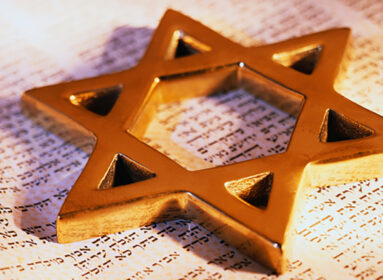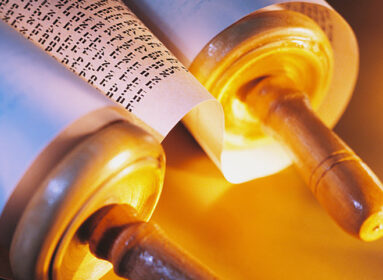By Shlomo Riskin
While the Passover Seder is still freshly on our minds and taste buds, allow me to suggest an important lesson that we are likely to overlook. Fascinatingly, alongside Moshe, who is not really mentioned by the Haggadah, there is another great Biblical personality who plays a major role in the Haggadah, but who is likewise overlooked. This personality is Joseph, first born of Rachel, favored son of Jacob-Israel and Grand Vizier of Egypt.
Let us start at the very beginning of the seder. After we raise the first cup of wine and recite Kiddush, we wash our hands without a blessing before eating a vegetable, and we make the blessing to God “Creator of the fruit of the earth.” The usual explanation for this is that karpas is the Greek word for vegetation, and Greco-Roman meals would generally begin with the vegetable hors d’oeuvre together with a ‘dip’. The seder is a reclining meal reminiscent of a Greco-Roman feast and so we begin the seder evening with this vegetable hors d’oeuvre/dip. For us, the vegetable is also a symbol of spring, Passover is called the Festival of the Spring – and the dip is generally salt water reminiscent of the tears of the Hebrew slaves.
There is, however, an entirely different interpretation of the karpas suggested by Rashi, the reknowned Torah commenator. In his commentary on the verse which mentions the coat of many colors (k’tonet passim Gen. 37:3). Rashi links this source to the verse in the Scroll of Esther which describes the rich embroidery of the palace of King Achashverosh: “There were hangings of white fine linen” (karpas, Esther 1:6), thereby identifying with the Persian word karpas which describes an expensive material or garment; the second syllable pas means stripe in Hebrew and evidently refers to an expensive material with stripes of many colors. The karpas would therefore refer to Joseph’s coat of many colors, the gift he received from his father elevating him over his siblings and singling him out as the bechor (firstborn). Interestingly enough, there is a custom in many Yemenite communities to dip the karpas vegetable into the charoset, a mixture of wine, nuts and sometimes dates, which the Jerusalem Talmud says is reminiscent of blood. Hence, just as the brothers dipped Joseph’s cloak of many colors into the blood of the goat claiming to their father that Joseph had been torn apart by a wild beast; we dip our karpas into the charoset.
What does this have to do with Passover? The Babylonian Talmud (B.T. Shabbat 10b) teaches in the name of Rav: “One should never favor one child over the other children in a family. It was because of an expensive garment bought for two sela’im that Jacob gave to Joseph – more expensive than anything he had given to any of his other children – he was envied by his brothers and the issue ‘snowballed’ until our forefathers were enslaved in Egypt.” Hence, the seder begins by warning every leader of the family to learn from the Joseph story the importance of showing equal affection and treatment to all of one’s children so as not to engender causeless hatred and strife.
The seder’s theme of the Joseph story continues with the cups of wine. Although the Babylonian Talmud (Pesachim 99b) links the four cups with the four (or five) expressions of redemption in the Book of Exodus (6:6-7), the Jerusalem Talmud (Pesachim 10:1) connects the cups of wine to the four or five times the word kos – cup – appears in the butler’s dream in the book of Genesis (40:9-13, 21). Of course, Joseph’s interpretation of the butler’s dream is that he would be freed from his enslavement and would be able to once again serve his master. Since this source deals with freedom from slavery in Egypt and actually uses the word kos, it is certainly legitimate to see it as a source for the cups of wine that we drink in remembrance of our exodus from Egypt.
Rabbi Elijah of Vilna (known as the Vilna Gaon, 1720-1797) identifies a reference to Joseph at the very end of the seder as well, with the Had Gadya song. He masterfully interprets the little goat bought for two zuzim as the goat whose blood was used to soil Joseph’s coat of many colors: the shock Jacob receives upon seeing the bloodied cloak is brought about by the two sela’im he had spent on the expensive cloak, which engendered the causeless hatred of the other brothers – a hatred unto death.
In a fascinating and parallel symbolic manner, the Jewish people are also the blameless goat whom our Father in Heaven bought unto Himself with the Two Tablets of Stone, the Decalogue He gave them at Sinai. Because of that gift, and the status of the Jewish people as the chosen people, we have been hated throughout the generations and persecuted unto death by tyrant after tyrant. Despite the causeless hatred against us, each of our attackers will be destroyed in turn until eventually even the angel of death will be destroyed by our Father in Heaven. At that time, Israel and the world will be redeemed and death will be destroyed forever.
May it be speedily and in our days.
Rabbi Shlomo Riskin is chancellor of Ohr Torah Stone and chief rabbi of Efrat, Israel.







 Southern New England Jewish Ledger
Southern New England Jewish Ledger















